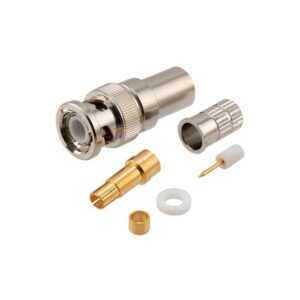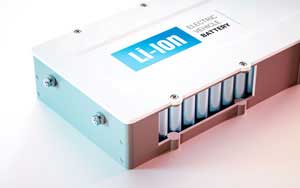TRB (Triaxial Bayonet) Connectors: An In-Depth Exploration

Introduction
The TRB connector is a triaxial RF connector designed for applications requiring superior shielding and minimal signal interference. Its bayonet-style coupling mechanism ensures secure connections, making it suitable for environments where reliability is paramount.
Design and Structure
TRB connectors are engineered to interface with triaxial cables, which consist of three conductors: a central conductor, an intermediate shield, and an outer shield. This configuration provides enhanced electromagnetic interference (EMI) protection compared to standard coaxial cables.
The connector features a three-lug bayonet coupling, distinguishing it from the two-lug design of standard BNC connectors. This design ensures a more secure connection and prevents accidental disconnection in high-vibration environments.
Technical Specifications
- Impedance: Non-constant; varies depending on application.
- Frequency Range: DC to 500 MHz.
- Voltage Rating: 400 volts RMS.
- Dielectric Withstanding Voltage: 1,200 VRMS.
- Insulation Resistance: 5,000 megohms.
- Contact Resistance:
- Center Contact: ≤5.0 milliohms.
- Intermediate Contact: ≤0.5 milliohms.
- Outer Contact: ≤0.5 milliohms.
- Temperature Range: −65°C to +165°C.
- Mating Cycles: Typically rated for 500 mating cycles.
- Cable Retention: Minimum of 40 pounds.
Applications
TRB connectors are utilized across various industries due to their superior shielding and reliability:
- Broadcasting: Used for transmitting high-quality video signals in television studios and equipment.
- Medical Equipment: Employed in imaging systems and diagnostic devices requiring low-noise signal transmission.
- Test and Measurement: Commonly found on oscilloscopes, signal generators, and other laboratory equipment.
- Military and Aerospace: Applied in avionics and military communication systems where signal integrity is critical.
- Nuclear Instrumentation: Used in radiation detection equipment due to their excellent shielding properties.
Advantages
- Enhanced Shielding: The triaxial design provides superior EMI protection compared to coaxial connectors.
- Secure Connection: The three-lug bayonet coupling ensures a reliable and vibration-resistant connection.
- Versatility: Suitable for both analog and digital signals across various frequencies.
- Durability: Designed to withstand harsh environmental conditions and frequent mating cycles.
Considerations
- Impedance Matching: It’s crucial to match the connector’s impedance with the system to prevent signal reflections.
- Frequency Limitations: While suitable for many applications, TRB connectors may not perform optimally at very high frequencies compared to other connector types.
- Size and Weight: In applications where space and weight are critical, smaller connectors like TRS or TTM may be more appropriate.







